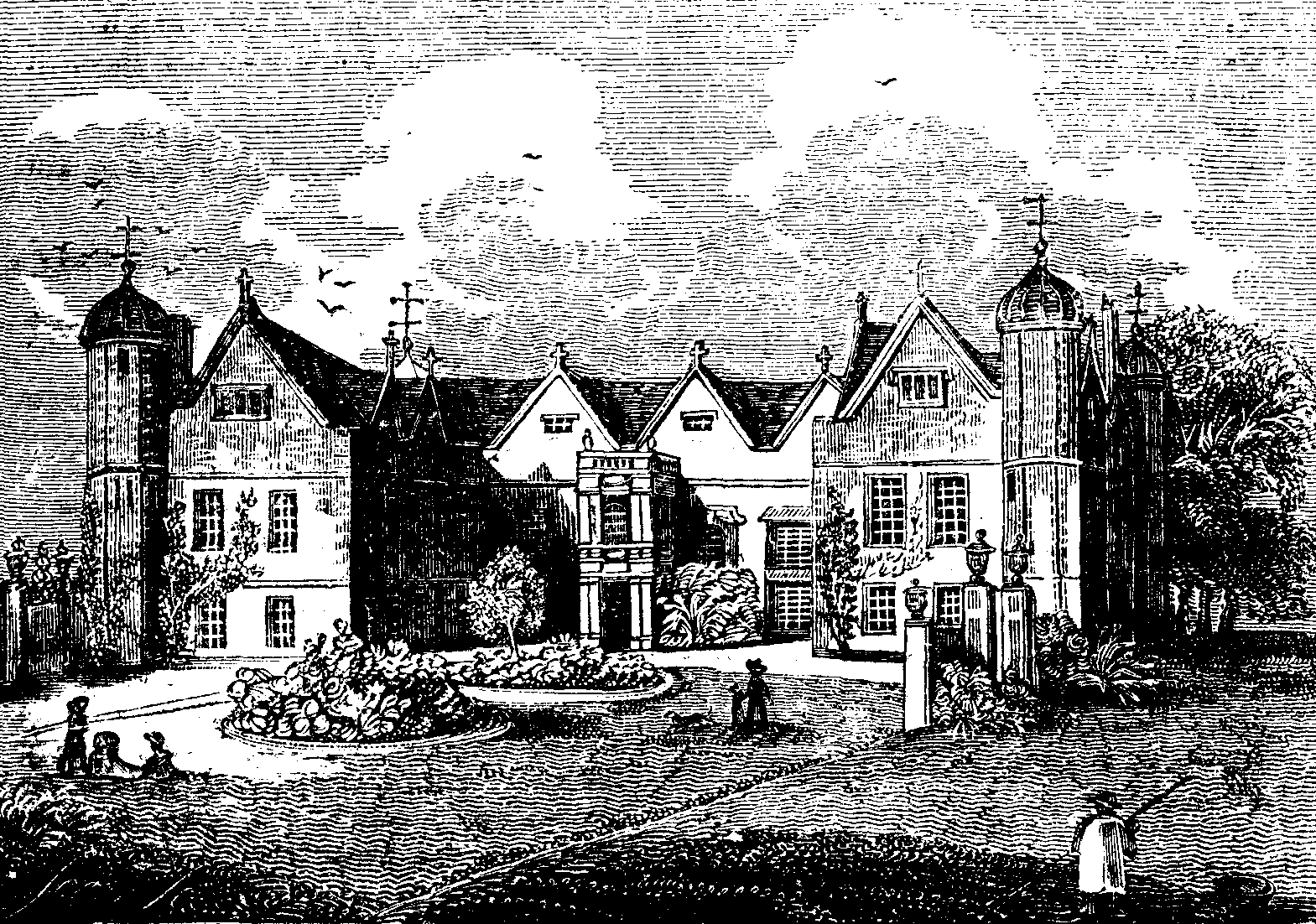E-text prepared by Jonathan Ingram, Margaret, David King,
and the Project Gutenberg Online Distributed Proofreading Team
THE MIRROR
OF
LITERATURE, AMUSEMENT, AND INSTRUCTION.
| Vol. 12, No. 331.] | SATURDAY, SEPTEMBER 13, 1828. | [PRICE 2d. |
CHARLECOTE HALL, NEAR STRATFORD-UPON-AVON
"One of the most delightful things in the world is going ajourney." Now if there be one of our million of friends who, likethe fop in the play, thinks all beyond Hyde Park a desert, let himforthwith proceed on a pilgrimage to Stratford-upon-Avon,the birthplace of SHAKSPEARE; and though he be the veriest Londonerthat ever sung of the "sweet shady side of Pall Mall," we ventureto predict his reform. If such be not the result, then we envy himnot a jot of his terrestrial enjoyment. Let him but think of thecountless hours of delight, the "full houses," the lighted dome anddeeping circles, of the past season; when
Dread o'er the scene the ghost of Hamlet stalks;
Othello rages, &c.
and then will he not enjoy a visit to the place where—
——Sweetest Shakspeare, Fancy's child,
Warbled his native wood-notes wild.
Sterne, the prince of sentimental tourists, says, "Let me have acompanion of my way, were it but to remark how the shadows lengthenas the sun declines;" but, for our part, we should prefer a visitto Stratford, alone, unless it were with some garrulous oldguide to entertain us with his or her reminiscences.
This brings us to Charlecote Hall, one of theShakspearean relics. It consists of a venerable mansion, situatedon the banks of the Avon, about four miles from Stratford, andbuilt in the first year of the reign of Elizabeth, by Sir ThomasLucy;
"A parliamente member, and justice of peace.
At home a poor scare-crow, at London an asse,"
and so well known as the prosecutor of Shakspeare. 1
The principal front, here represented, assumes, in its groundplan, the form of the letter E—said to have been intended asa compliment to the queen, who, as appears from the Black Book ofWarwick, visited this place in 1572.
The above is copied from one of a Series of Views illustrative[pg162] of the Life of Shakspeare, drawn and etched by Mr. W.Rider, of Leamington. These engravings are five in number, but theartist explains that he has selected such subjects only, "as fromtradition, or more certain record, might fairly be presumed to beardirect relation to the life of the poet. But while he regrets thatthe number of authenticated subjects are so few, he feels that frominnovation or decay, they are almost hourly becoming fewer; and is,therefore, prompted to secure the few remnants left, while they areyet within his reach."
There is no doubt that the grounds a
